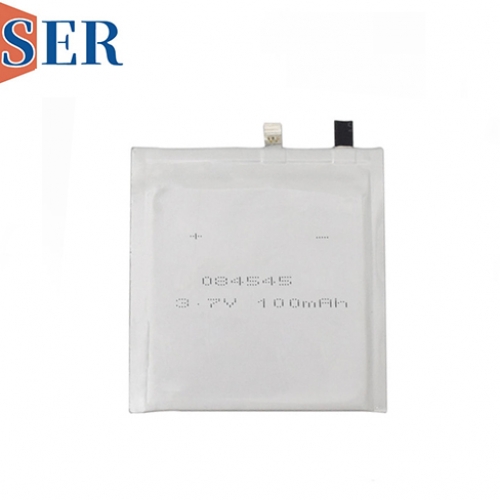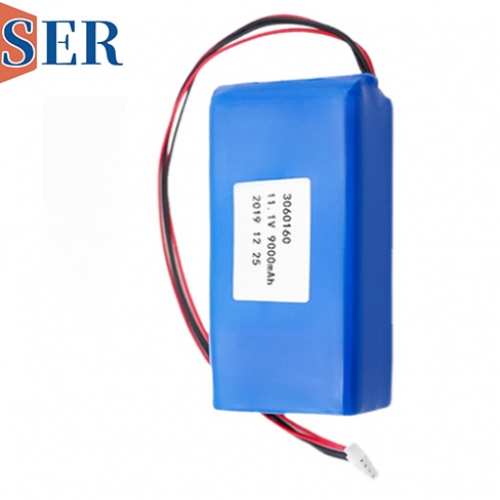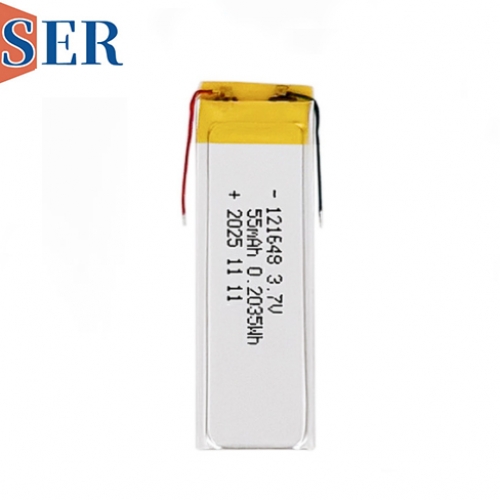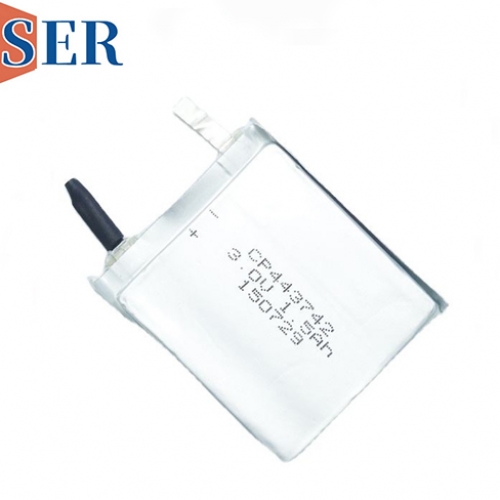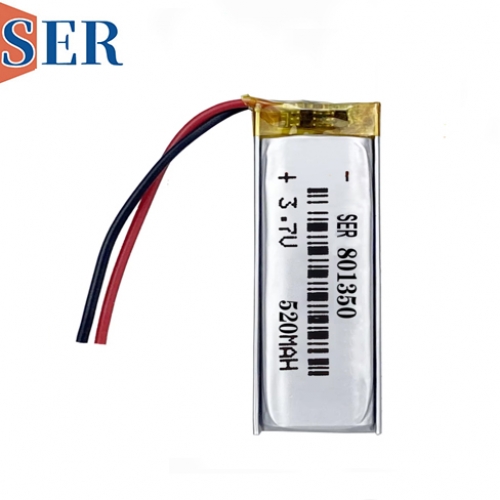CP443742 3.0V 1500mAh Ultra Thin Li-MnO2 Battery: A Comprehensive Analysis of Features, Applications and Market Potential
CP443742 3.0V 1500mAh Ultra Thin Li-MnO2 Battery: A Comprehensive Analysis of Features, Applications and Market Potential
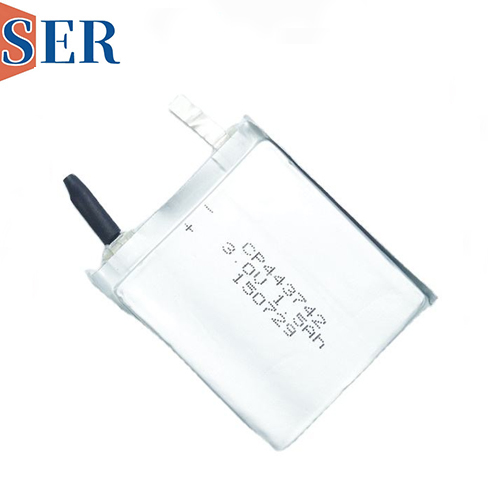
1. Introduction
In the rapidly advancing world of electronics, the demand for power sources that balance performance, size, and reliability has never been more pronounced. From compact consumer devices to large-scale industrial systems, the battery serves as the lifeblood, dictating operational efficiency, device lifespan, and user experience. Among the diverse array of battery technologies available today, lithium-based batteries have emerged as a dominant force, owing to their exceptional energy storage capabilities and long-term stability. Within this category, the Li-MnO2 (Lithium-Manganese Dioxide) battery has carved a niche for itself, particularly in low-power, long-duration applications, thanks to its unique chemical composition that combines high energy output with inherent safety.
The CP443742 3.0V 1500mAh Ultra Thin Li-MnO2 Battery represents a significant advancement in this space. Engineered to address the growing need for slim, lightweight, yet high-capacity power solutions, this battery merges cutting-edge material science with precision manufacturing. Its ultra-thin form factor, coupled with a nominal voltage of 3.0V and an impressive 1500mAh capacity, makes it a game-changer for devices where space is constrained but power demands remain high. Unlike lower-capacity counterparts, the 1500mAh rating of the CP443742 ensures extended operational periods, reducing the frequency of battery replacements and minimizing downtime for critical systems.
This article aims to provide a thorough examination of the CP443742 battery, covering its key technical features, real-world applications across industries, compliance with global standards, and its potential to shape the future of power storage in various sectors. By dissecting its specifications and exploring how it addresses industry challenges, we will highlight why this battery has become a preferred choice for engineers, manufacturers, and end-users seeking reliable, efficient, and space-efficient power solutions.
2. Key Features of the CP443742 3.0V 1500mAh Ultra Thin battery
The CP443742 battery stands out in the competitive landscape of lithium batteries due to a suite of carefully designed features. Each feature is tailored to overcome specific limitations of traditional batteries, ensuring optimal performance, safety, and adaptability to diverse environments. Below is a detailed breakdown of these key attributes.
2.1 High Energy Density
Energy density—defined as the amount of energy stored per unit volume or weight—is a defining metric for any battery, especially in applications where space is at a premium. The CP443742 ultra thin battery boasts an exceptional high energy density, a direct result of its Li-MnO2 chemistry. Lithium, the lightest metal in the periodic table, serves as the anode, while manganese dioxide (MnO2), a highly efficient and stable cathode material, works in tandem to deliver a powerful energy output relative to the battery’s compact size and weight.
The high energy density of the CP443742 is particularly advantageous for devices that require prolonged operation without frequent battery swaps. For example, in intelligent public transportation cards, which are used daily by millions of commuters, a high energy density battery ensures the card remains functional for years—often the entire lifecycle of the card—without needing a replacement. Similarly, in nonstop charging systems that act as backup power for critical infrastructure (such as data centers or hospital equipment), the 1500mAh capacity, combined with high energy density, guarantees that the system can sustain power during extended outages, preventing costly disruptions.
When compared to other common battery chemistries, the Li-MnO2 composition of the CP443742 offers a clear advantage. Alkaline batteries, for instance, typically have an energy density of 150–200 Wh/kg, while nickel-metal hydride (Ni-MH) batteries range from 60–120 Wh/kg. In contrast, the CP443742, leveraging Li-MnO2 technology, achieves an energy density of up to 280 Wh/kg. This difference translates to more power in a smaller package, making it ideal for miniaturized devices like smart cards and compact remote controls, where every millimeter of space matters.
2.2 High Single Cell Voltage
Voltage compatibility is a critical consideration for battery selection, as it directly impacts whether a battery can power a device without additional circuitry. The CP443742 ultra thin battery features a high single cell voltage of 3.0V, a significant advantage over many other single-cell batteries. Alkaline AA or AAA batteries, for example, have a nominal voltage of 1.5V, while Ni-MH batteries operate at around 1.2V. This higher voltage of the CP443742 means it can directly power devices designed for 3.0V operation, eliminating the need to connect multiple cells in series—a practice that increases device size, weight, and complexity.
The benefits of a high single cell voltage extend beyond space savings. First, it simplifies circuit design for manufacturers. A device requiring 3.0V can integrate a single CP443742 battery instead of two 1.5V alkaline batteries, reducing the number of components (such as wiring and voltage regulators) and lowering production costs. Second, the 3.0V output of the CP443742 maintains exceptional stability throughout its discharge cycle. Unlike lower-voltage batteries, which experience a gradual voltage drop as they deplete, the CP443742 retains a near-constant 3.0V for the majority of its lifespan, only declining slightly as it nears full discharge. This stability ensures consistent performance for voltage-sensitive devices.
This feature is particularly critical for industrial applications like automated railcar identification systems and production line autocontrol systems. These systems rely on precise voltage levels to transmit data (e.g., railcar location or production metrics) and operate machinery. A drop in voltage could lead to data corruption, equipment malfunctions, or even production halts. The CP443742’s high, stable single cell voltage mitigates these risks, ensuring uninterrupted operation.
2.3 Light Weight
In an era where portability and user comfort are paramount, the weight of a battery can make or break the success of a device. The CP443742 battery is engineered to be exceptionally lightweight, a trait enabled by its Li-MnO2 chemistry and ultra-thin design. Lithium’s low atomic weight (just 6.94 g/mol) is a key contributor, as it allows for a high energy-to-weight ratio. Additionally, the battery’s slim profile—achieved through advanced electrode fabrication and compact casing—further reduces overall weight without compromising capacity or durability.
The lightweight nature of the CP443742 is a boon for consumer and industrial devices alike. For intelligent cards, such as driver’s licenses or public transportation cards, a heavy battery would make the card bulky and uncomfortable to carry in a wallet or pocket. The CP443742’s light weight ensures these cards remain thin and portable, enhancing user convenience. Similarly, automobile remote control locks—often attached to keychains—benefit from a lightweight battery, as it reduces strain on the keychain and makes the remote easier to handle during daily use.
For manufacturers, the lightweight design of the CP443742 opens up new possibilities for device innovation. It allows for the creation of smaller, more compact products—such as wearable sensors or miniaturized industrial trackers—without sacrificing power. In industries like healthcare, where wearable devices (e.g., patient monitoring tags) must be unobtrusive, the CP443742’s light weight ensures patient comfort while maintaining reliable power.
2.4 High Security
Safety is non-negotiable when it comes to battery technology, especially for lithium-based batteries, which have faced scrutiny in the past due to rare but high-profile incidents involving overheating or leakage. The CP443742 battery addresses these concerns head-on, incorporating multiple layers of security to ensure safe operation, storage, and transportation.
At the core of its safety profile is the Li-MnO2 chemistry itself. Unlike lithium-ion (Li-ion) batteries, which use flammable liquid electrolytes, Li-MnO2 batteries employ a more stable electrolyte system. Manganese dioxide, the cathode material, is chemically inert under normal operating conditions, reducing the risk of thermal runaway—a phenomenon that can lead to overheating or fire. Additionally, the CP443742 features a hermetically sealed casing, which prevents electrolyte leakage. Leakage is not only damaging to devices (it can corrode circuit boards) but also poses a risk to users, as electrolytes are often caustic.
To further enhance safety, the CP443742 is equipped with a built-in protection circuit module (PCM). This module monitors the battery’s voltage, current, and temperature in real time, triggering protective measures if abnormal conditions are detected. For example, if the battery is overcharged (a common cause of damage), the PCM cuts off the charging current. Similarly, in the event of a short circuit or over-discharging, the PCM shuts down the battery to prevent damage.
These safety features make the CP443742 ideal for high-risk environments, such as mine personnel identification systems. Mines are prone to extreme temperatures, dust, and potential exposure to flammable gases, making battery safety critical. The CP443742’s robust security measures ensure it can operate safely in these harsh conditions, providing reliable power to identification tags that track worker location—an essential component of mine safety protocols.
2.5 Stable Operating Voltage
Consistent voltage output is essential for devices that rely on precise power to function correctly. The CP443742 battery delivers exceptional stability in its operating voltage, a characteristic rooted in its Li-MnO2 chemistry and optimized cell design. Unlike alkaline batteries, which exhibit a gradual voltage decline throughout their discharge cycle (e.g., dropping from 1.5V to 0.8V), the CP443742 maintains a flat discharge curve. This means it retains approximately 3.0V for up to 80% of its discharge cycle, only experiencing a slight voltage drop as it approaches full depletion.
The stable operating voltage of the CP443742 is a game-changer for applications that demand reliability. Take container identification systems, for example. These systems use RFID tags attached to shipping containers to transmit data (e.g., contents, destination, and handling instructions) to readers at ports or warehouses. A stable voltage ensures the RFID tag can transmit signals with consistent strength and clarity, preventing data loss or miscommunication. Similarly, vehicle charge check systems—used to monitor the battery level of cars, trucks, or electric vehicles—rely on accurate voltage readings to provide users with reliable charge status updates. The CP443742’s stable voltage ensures these readings are precise, helping users avoid unexpected battery failures.
Beyond performance, stable voltage also extends the lifespan of connected devices. When a device is powered by a battery with fluctuating voltage, it may experience intermittent stress on its components. For instance, a sudden voltage drop could cause a microchip to reset or a sensor to provide inaccurate data, leading to premature wear and tear. The CP443742’s consistent voltage output reduces this stress, ensuring devices operate at their optimal level and last longer.
2.6 Wide Operating Temperature Range
Electronic devices are often deployed in environments with extreme temperature variations, from freezing cold winters to scorching hot summers. The CP443742 battery is designed to thrive in these conditions, boasting a wide operating temperature range that makes it suitable for both indoor and outdoor applications.
Typically, the CP443742 can operate reliably between -20°C and 60°C, with some variants capable of withstanding temperatures as low as -30°C or as high as 70°C. This versatility is achieved through careful selection of materials and advanced manufacturing techniques. The electrolyte, for example, is formulated to remain conductive at low temperatures (preventing the battery from “freezing” and losing power) and stable at high temperatures (avoiding electrolyte breakdown or gas formation). The battery’s electrodes are also coated with heat-resistant materials, ensuring they maintain their structural integrity and electrical performance across temperature extremes.
The wide operating temperature range of the CP443742 is particularly valuable for outdoor applications. Consider automated road charge management systems—used in toll plazas to collect fees automatically. These systems are exposed to harsh weather conditions, from sub-zero temperatures in winter to intense sunlight in summer. A conventional battery might fail in extreme cold (losing capacity) or overheat in extreme heat (reducing lifespan). The CP443742, however, operates reliably in these conditions, ensuring the toll system remains functional year-round.
Another key application is mine personnel identification systems. Mines often have varying temperature zones—some areas are cold due to depth, while others are hot due to mining activities (e.g., drilling or blasting). The CP443742’s ability to operate across a wide temperature range ensures that identification tags remain functional in all parts of the mine, providing continuous tracking of workers and enhancing safety.
2.7 Low Self-Discharge Rate
Self-discharge is a natural phenomenon in batteries, where the battery loses charge over time even when not in use. A low self-discharge rate is critical for devices that are stored for long periods or used infrequently, as it ensures the battery remains ready for use when needed. The CP443742 battery excels in this area, thanks to its Li-MnO2 chemistry and sealed design.
Li-MnO2 batteries are inherently low in self-discharge compared to other chemistries. Alkaline batteries, for example, can lose up to 20% of their charge per year when stored at room temperature. Ni-MH batteries fare even worse, losing up to 30% of their charge per month. In contrast, the CP443742 has a self-discharge rate of less than 1% per year. This means that if the battery is stored at room temperature (25°C) for a year, it will retain over 99% of its charge. This exceptional low self-discharge rate is made possible by the stable chemical reaction between lithium and manganese dioxide, which minimizes unwanted side reactions that cause charge loss.
The benefits of low self-discharge are far-reaching. For intelligent cards, such as driver’s licenses, which may be stored in a wallet for months without use, the CP443742 ensures the card’s electronic components (e.g., RFID chips) remain powered when needed—for example, when scanning the card at a security checkpoint. For automobile remote control locks, which are often used sporadically, a low self-discharge rate means users don’t have to worry about the remote dying unexpectedly due to prolonged storage.
From a cost perspective, low self-discharge also reduces maintenance expenses. In industrial settings, such as nonstop charging systems or production line autocontrol systems, replacing batteries frequently can be time-consuming and costly. The CP443742’s low self-discharge rate means it can be used for years without replacement, cutting down on maintenance time and expenses.
2.8 Compliance with UN38.3, RoHS, and CE Standards
In today’s global marketplace, compliance with international standards is essential for ensuring product safety, environmental responsibility, and market access. The CP443742 battery meets the requirements of three key global standards: UN38.3, RoHS, and CE. This compliance not only validates the battery’s quality and safety but also makes it suitable for sale and use in markets around the world.
UN38.3 Compliance
UN38.3 is a United Nations standard that governs the transportation of lithium batteries. It sets strict testing requirements to ensure batteries are safe to transport via air, sea, or land, minimizing the risk of fires, explosions, or leaks during transit. The CP443742 undergoes a series of rigorous tests to meet UN38.3 standards, including:
Altitude Simulation: Testing the battery’s performance at low pressure (equivalent to 11.6 kPa), simulating air travel conditions.
Thermal Testing: Exposing the battery to extreme temperatures (from -40°C to 75°C) to assess stability.
Vibration Testing: Subjecting the battery to mechanical vibrations (10–500 Hz) to ensure structural integrity.
Shock Testing: Applying impact forces (up to 1500 G) to simulate rough handling during transportation.
Short-Circuit Testing: Evaluating the battery’s response to a short circuit (e.g., preventing overheating or fire).
By passing these tests, the CP443742 is certified for unrestricted global transportation, a critical advantage for manufacturers that distribute their products internationally.
RoHS Compliance
RoHS (Restriction of Hazardous Substances) is a European Union (EU) directive that restricts the use of six hazardous substances in electrical and electronic equipment (EEE). These substances include lead (Pb), mercury (Hg), cadmium (Cd), hexavalent chromium (CrVI), polybrominated biphenyls (PBBs), and polybrominated diphenyl ethers (PBDEs). The CP443742 is fully RoHS-compliant, meaning it contains none of these substances above the EU’s strict limits (e.g., less than 1000 ppm for lead).
RoHS compliance is not only a legal requirement for selling products in the EU but also a marker of environmental responsibility. By avoiding hazardous substances, the CP443742 reduces its environmental impact during production, use, and disposal. It also ensures the battery is safe for users, as hazardous substances can pose health risks if released (e.g., lead poisoning from battery leakage).
CE Compliance
CE (Conformité Européenne) is a certification mark indicating that a product meets the health, safety, and environmental protection requirements of the EU.

